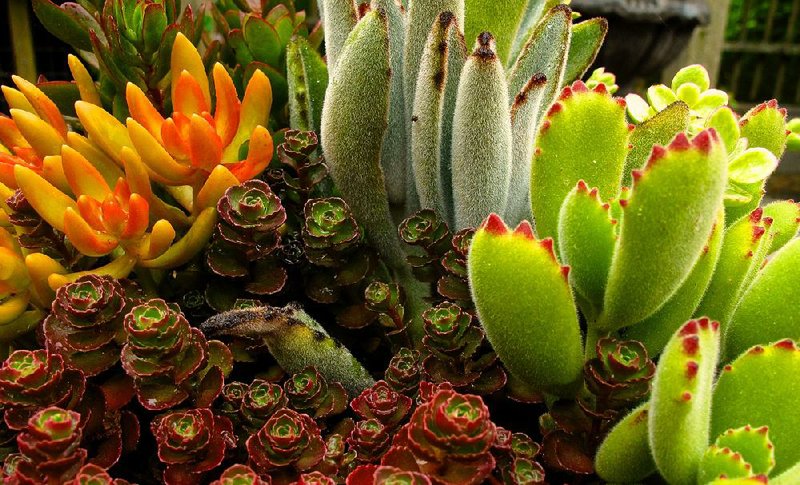There's no need for gardeners to go dormant along with their landscape when cold weather arrives. Arranging plants in small dishes and pots can be an enjoyable indoor alternative at the end of the summer growing season.
"By creating a dish garden, you are in fact creating a miniature landscape," said Dawn Pettinelli, an Extension educator with the University of Connecticut. "It can be as plain or as frivolous as one desires."
Dish gardens generally consist of several different plants arranged together in a single container.
The most important thing is choosing plant varieties needing similar surroundings and care. For example, dish gardens combining succulents with cacti would work. Mixing plants preferring direct sunlight with something like shade-favoring orchids might not.
Or choose a theme: desert garden or tropical garden, moss garden or rock garden, herb garden or woodland garden, and many others.
"You could make one up depicting where you vacationed, a holiday theme or even the time of the dinosaurs," Pettinelli said.
Indoor gardens, with their miniature, low-maintenance plants, thrive in small spaces, and that makes them a natural fit for succulents.
"Thanks to their intriguing forms and ease of care, succulents are replacing African violets as the plants of choice for indoor gardens," said Debra Lee Baldwin, author of Designing With Succulents (Timber Press, revised second edition).
Succulents are shallow-rooted. "For a windowsill, a pot that fits into your cupped hands is perfect," Baldwin said.
"If using a tall or deep container, fill it half full with empty plastic water bottles," tightly capped, she said. "You won't waste soil that the plants don't need and that might even compromise their health by holding moisture that causes rot. Plus the pot will weigh less."
When choosing containers, determine first how large the plants will grow, Pettinelli said.
"Either give plants that tend to grow a little larger and faster a larger and deeper container or plan on switching them out when the container looks out of proportion," she said.
Container plants should not be encouraged to grow too rapidly, so Pettinelli recommends using half-strength liquid fertilizers two or three times per year.
"For succulents, I would use a cactus potting mix," she said. "For all others, I would use a layer of coarse sand or gravel at the bottom and then a thin layer of horticultural charcoal."
Stick a finger into the potting soil to determine when to water, she said. "If it feels on the dry side, add some water. The soil should not be saturated but it should feel moistened.
"I think watering properly is one of the most difficult tasks for people to learn," Pettinelli said.
Use whatever materials you have to accessorize -- natural ones like rocks, lichens, sticks, acorns, small shells, or figurines and fairies, she said.
"Because fairy gardens are still pretty popular, often local garden centers carry fairy-theme and other small items suitable for dish gardens," she said.
Much of the fun in growing succulents is their adaptability, Baldwin said. "Give them adequate light, good air circulation and fast-draining soil and you can grow succulents in a pair of socks," she said.
HomeStyle on 11/10/2018
